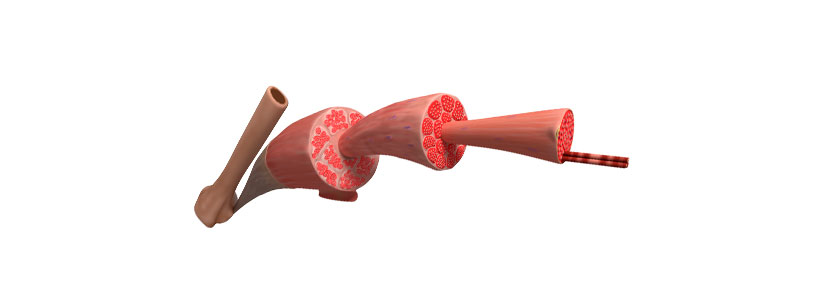Content available at: Español (Spanish)
In recent years, the poultry meat markets have shifted from predominantly a whole poultry-based product to a highly diversified industry focused on cut-up parts, boneless meat and ready-to-eat processed products.
- The growing demand for processed poultry products is pushing the poultry industry to obtain a higher yield from the breast muscles and produce heavier birds.
- Current genetic improvements allow the industry to produce chickens that reach 2.2 kg at 34 days of age.
- At the same time, breast performance has increased dramatically and currently constitutes more than 1/5 of the total body weight.
Increased breast abnormalities
The tremendous changes in the growth of birds have been achieved mainly by inducing: Hypertrophy -cellular enlargement- Hyperplasia -cellular proliferation-, to a lesser extent, also reducing the rate of protein degradation during muscle development
Consequently, compared to unselected birds, the breast muscle fibers of fast growing birds are larger, both in diameter and length, in addition to having an increased glycolytic metabolism and a higher proportion of white muscle fibers.
Increase in fiber mass
Unfortunately, increased fiber mass is associated with low capillarity, which leads to insufficient supply of oxygen and nutrients to muscle cells. It can also promote the inappropriate release of metabolic products, leading to dysregulation of homeostasis and consequently other cellular dysfunctions. These physiological changes are associated with an increase in breast meat abnormalities, such as:
- Deep Pectoral Myopathy (DPM)
- Pale, Soft and Exudative meat (PSE)
- White Striated (White Striping, WS)
- Wooden Breast (WB)
Deep Pectoral Myopathy (DPM)
In addition to DPM, producers observe similar problems in the dorsal musculature in the upper back
The incidence of DPM currently reaches values of up to 1-2% in slaughtered birds weighing more than 3 kg. Dorsal Myopathy (DM) can exceed this value, especially in winter when temperatures allow faster growth.
Consequences of intense flapping
- Intense flapping during rearing is cited as the root cause of PMD and DM, which leads to increased blood flow to the dorsal and pectoral muscles and increases wing weight by approximately 20%.
- The magnitude of PMD can be reduced if blood circulation is improved in the small muscles and if pectoral development is slowed.
- Genetic selection, reduction of strange sounds from human activity and sudden and excessive increases in light intensity should reduce loud flapping.
Green muscle disease
The breast musculature in green muscle disease presents hemorrhages with reddish-brown inflammatory lesions in the early stages of development that later turn greenish.
Keep up to date with our newsletters
Receive the magazine for free in digital version
REGISTRATION
ACCESS
YOUR ACCOUNT
LOGIN
Lost your password?

